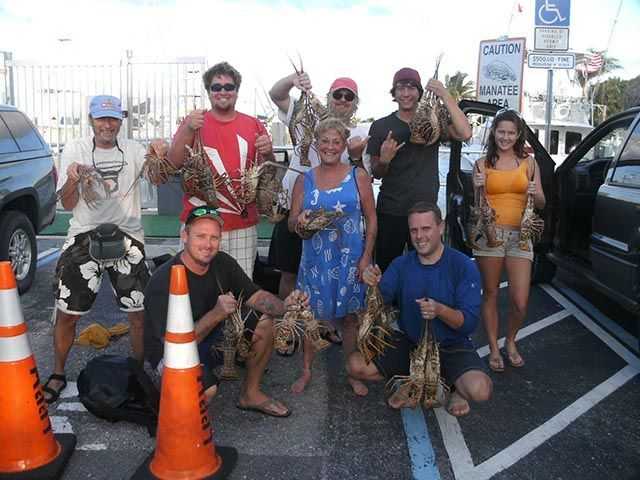
[dropcap]J[/dropcap]anuary may not be the warmest month to go diving, but those who venture out may be in for a treat. If sea conditions lay down long enough between cold fronts, divers who sneak out local inlets may be surprised to find abundant lobster on area reefs. Sharks also return to local waters making for exciting encounters during the winter months—hunters are wise to stay alert while spearfishing too.
Since lobster season remains open through March, divers have plenty of time to bag a delicious meal while exploring area reefs. Rough sea conditions typical of January in South Florida can affect lobster in a few ways. Lobsters are known to move around during large swells and heavy surf into areas that are typically picked over. Reefs like Peck Lake, just south of the St. Lucie Inlet in Stuart, or the shallow reef off of Bathtub Beach are usually hit hard during the first few months of lobster season leaving plenty of shorts behind. As the New Year gets underway, divers may be surprised to see the return of larger bugs in greater numbers to these areas. Secondly, fewer boats make it offshore this time of year compared to August, so pressure on lobster populations is much lower thereby increasing the chances for those who do make it out. Boat limits are not uncommon this time of year.
In addition to lobster, other interesting creatures can be found roaming reefs this time of year: sharks will keep divers on their toes as they migrate past local waters. Lemon sharks congregate on area reefs in large numbers each year between the months of December and April to reproduce. This can be quite a spectacle as 20 to 30 sharks in one area have been commonly reported in years past. Local dive operators run special trips this time of year to witness these aggregations that are found nowhere else in the world. Other species, such as sand tiger sharks, usually common off the Carolinas, have been found offshore on the Treasure Coast this time of year too, presumably forced south due to cooler water temperatures. Bull sharks are also common. Hunters should consider floating speared fish to the surface on a lift bag or sausage in order to avoid losing a catch or provoking an encounter. A common technique is to color code lift bags so boat crew know what’s attached to the other end, red for marking divers positions beneath the surface and yellow or green for fish.
Between plentiful lobster action and the chance encounter with seasonal sharks, diving in January is well worth braving potentially chilly air temps. Be sure to take advantage of the annual lemon shark aggregations before they are gone. Witnessing these events are considered by many to be a must-dive this time of year.